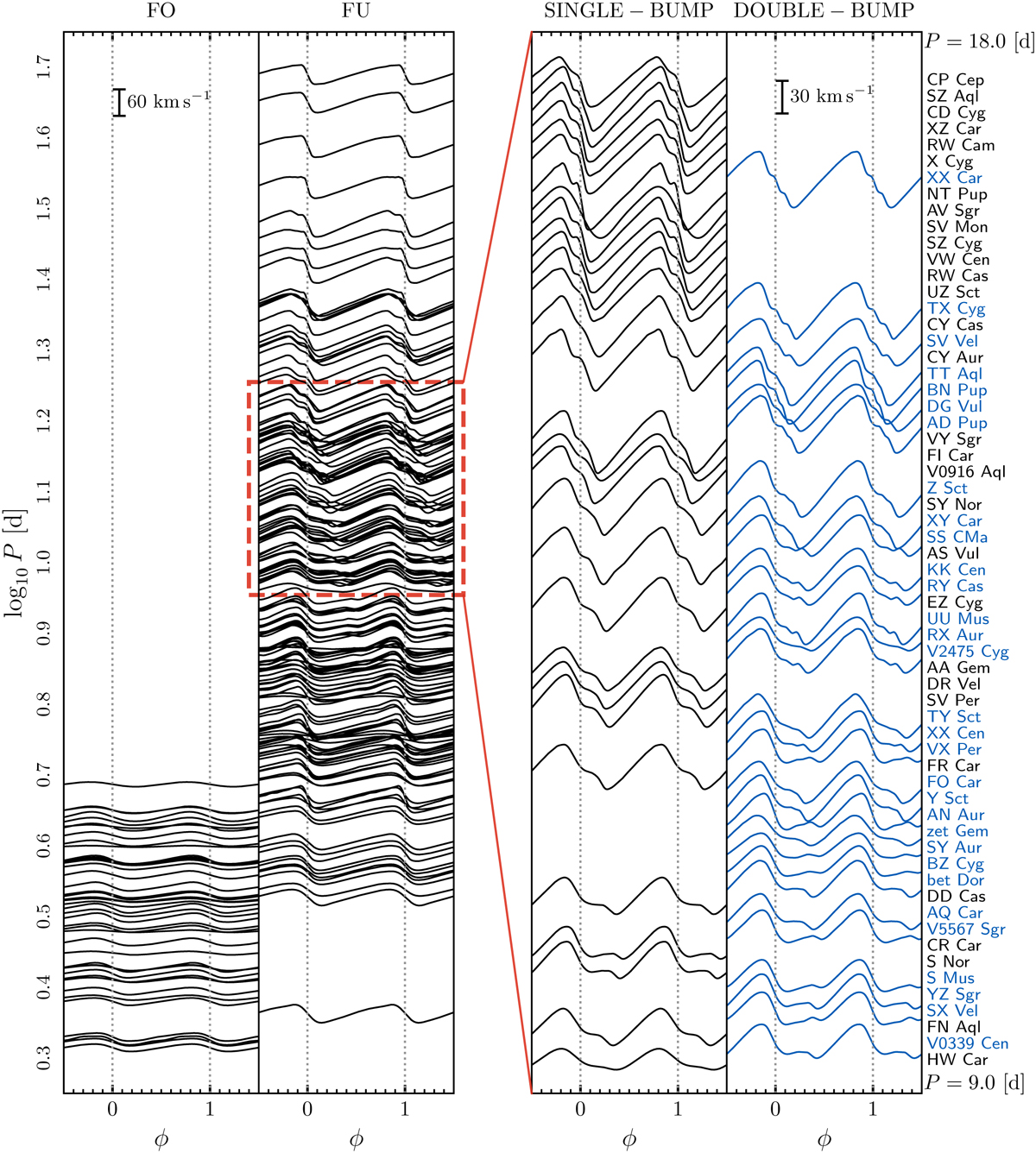Fig. 12

Download original image
Hertzsprung progression illustrated by the model RV curves of 208 fitted Cepheids (11 low-amplitude stars were removed for clarity). Cepheids are offset in the vertical direction according to their log Ppuls. Errorbars near the top show the constant velocity scale. Vertical dotted lines indicate ϕ = 0, the phase of minimum radius. Left panel, left column: Cepheids classified as first overtone pulsators in Gaia DR3. Left panel, right column: Cepheids classified as fundamental mode pulsators in Gaia DR3. Outliers with particularly small amplitudes are not shown for clarity (cf. Sect. 4.4). The shortest-period FU Cepheids is BP Cir. Right panels: close up view in the period range 9–18 days. Stars with double-peaked bump features are shown in blue on the right, stars with single-peaked bumps on the left in black. Names are color coded accordingly. Outliers Z Lac, CH Cas, and Y Oph are not shown for clarity. The double-peaked bump appears in 31/61 ≈ 50% of VELOCE Cepheids and may be a ubiquitous feature of Cepheid RV curves that requires very high precision and extremely dense phase sampling for detection.
Current usage metrics show cumulative count of Article Views (full-text article views including HTML views, PDF and ePub downloads, according to the available data) and Abstracts Views on Vision4Press platform.
Data correspond to usage on the plateform after 2015. The current usage metrics is available 48-96 hours after online publication and is updated daily on week days.
Initial download of the metrics may take a while.


